Why was Bobby Storey's funeral so controversial?
- Published
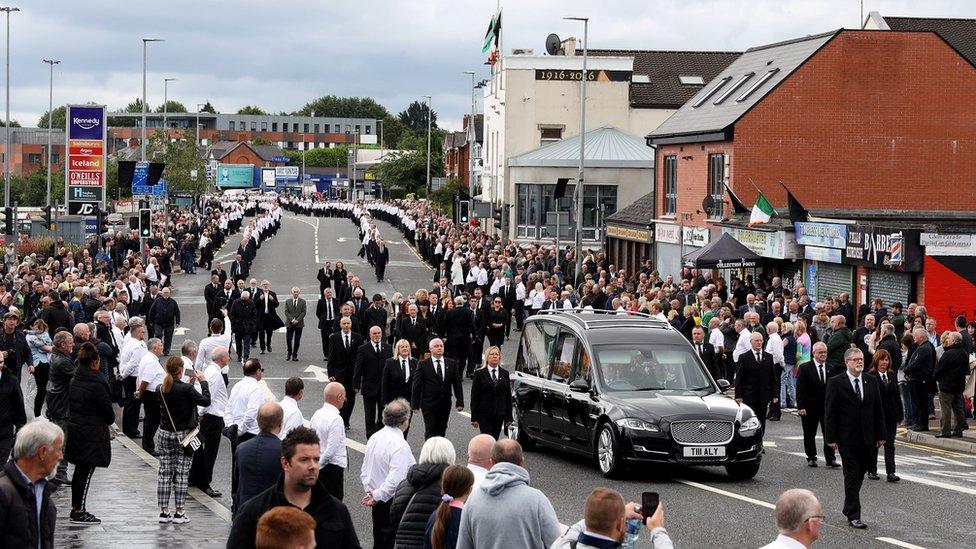
A large number of mourners turned out for the funeral on Tuesday
The attendance of then-Deputy First Minister Michelle O'Neill at the funeral of senior republican Bobby Storey in June 2020 led to the biggest crisis in NI politics since devolution was restored six months prior.
Ms O'Neill and other senior Sinn Féin figures were widely criticised for attending the funeral, with claims they broke coronavirus guidelines.
A decision was later made by the Public Prosecution Service not to prosecute anyone in connection with the funeral.
Previously, Ms O'Neill apologised for the hurt caused by her actions and any undermining of the public health message, but not for her attendance, having once said she would "never apologise for attending the funeral of a friend".
But in a u-turn in May 2024, Ms O'Neill apologised for her attendance at Mr Storey's funeral and the hurt that was caused as she gave evidence to the UK Covid Inquiry.
Here is how the crisis unfolded.
Who was Bobby Storey?
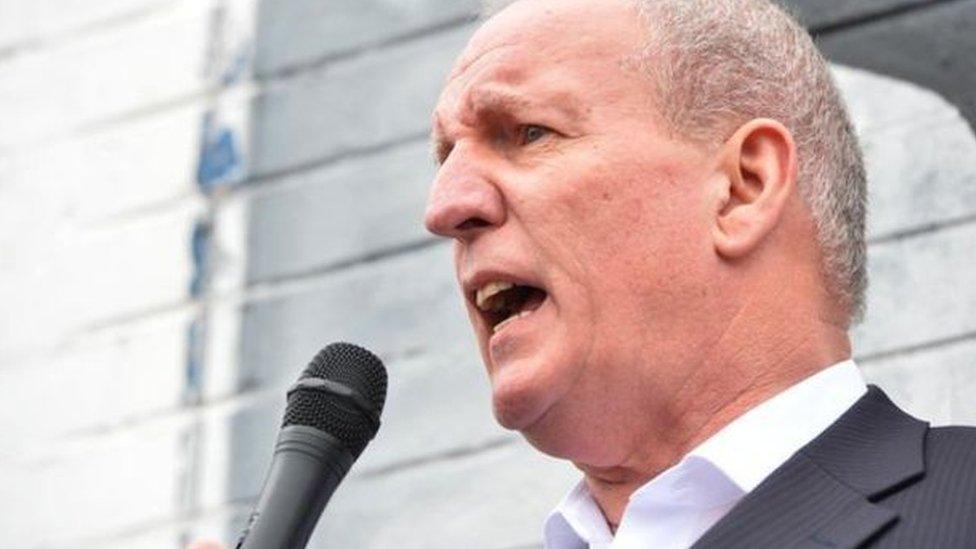
Bobby Storey was previously chairman of Sinn Féin and a close friend of Gerry Adams
The north Belfast man was considered the head of intelligence of the IRA for a period from the mid-1990s - being named as such under parliamentary privilege.
Security sources linked him to several major incidents, including the £26m Northern Bank robbery in 2004., external
More recently, he was northern chairman of Sinn Féin.
He spent more than 20 years in jail, beginning with internment without trial when he was 17, a year after he joined the IRA in 1972.
In 1981, he was sentenced to 18 years in prison for possession of a rifle following an attack on the Army.
He was a close and lifelong ally of former Sinn Féin president Gerry Adams.
When he was released from jail in 1994, Mr Storey was seen as a key individual in selling the peace process to republican hardliners.
What happened at the funeral?
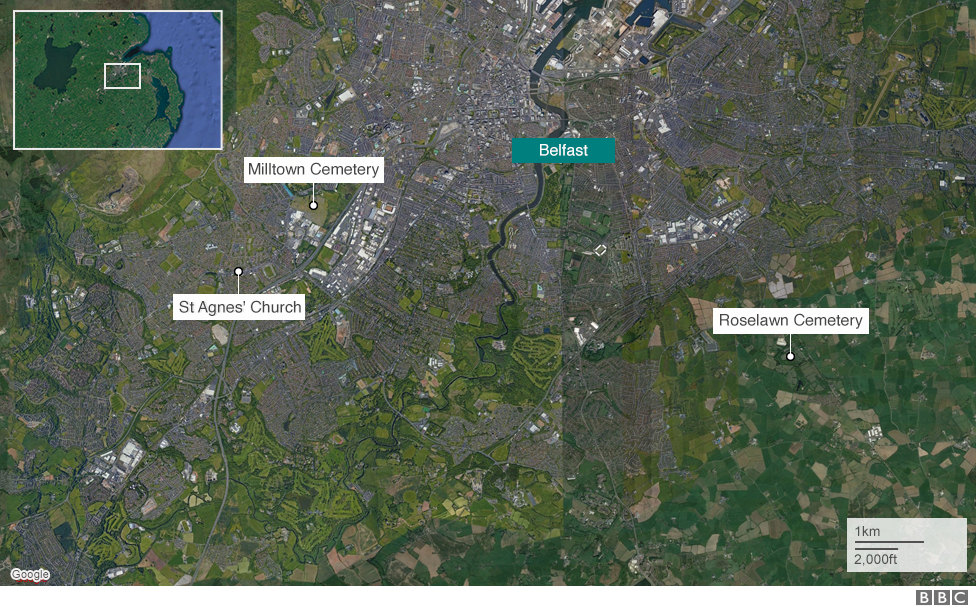
Mr Storey's coffin was driven from his home in west Belfast for his funeral at St Agnes' Church on the Andersonstown Road.
Large numbers of people lined the route and the cortege was followed at a distance by a large number of mourners.
After Requiem Mass, Mr Storey's remains were taken to Milltown Cemetery where speeches were made by senior republican figures including former Sinn Féin leader Gerry Adams.
His body was then taken to Roselawn Cemetery in east Belfast, where it was cremated at about 15:30.
Why was the funeral controversial?
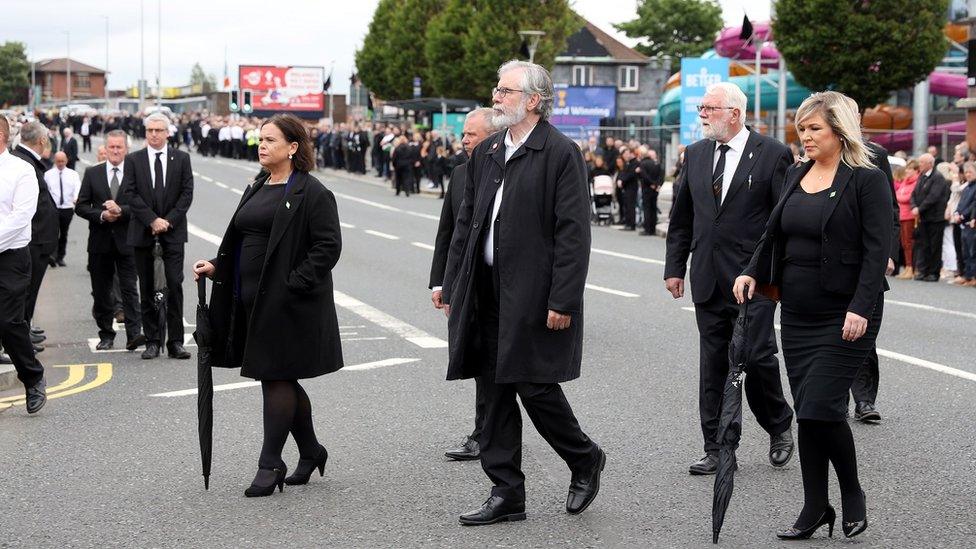
Sinn Féin's leader and deputy leader attended, along with former leader Gerry Adams (centre)
Ms O'Neill was part of the funeral cortege, which Sinn Féin said included no more than 30 people,
Critics have suggested social distancing was not maintained in crowds that lined the streets as the hearse drove by or by large groups of people who walked behind the hearse at a greater distance.
Ms O'Neill also went to a Requiem Mass in St Agnes' Church in Andersonstown, which the BBC understands was attended by about 120 people.
She was also criticised for posing for a photograph at Milltown cemetery, where a man had his arm around her shoulders.
She subsequently said this incident took place "in the blink of an eye" and "shouldn't have happened".
Critics were angry the then-deputy first minister, who appealed to the public during the pandemic to adhere to social distancing guidelines to reduce the risk of coronavirus transmission, has now contravened the very rules she helped set.
Where did Sinn Féin stand?
Immediately following the funeral, both the party and Ms O'Neill maintained they acted within the guidelines at all times and broke no rules.
In statements to the Irish News and Stormont's Executive Committee, she did not apologise for any of her actions, with the exception of the photograph.
Sinn Féin gave her its full backing, saying she would not stand down "under any circumstances".
Ms O'Neill later issued a statement expressing concern for families of those who had died in the pandemic whose grief would have been compounded by lockdown restrictions.
"Not being able to have their family and friends' support to help them through was hugely difficult," she said.
"I am also concerned that those grieving families are experiencing more hurt over recent days. I am sorry for that."
She reiterated that she had kept to the rules, adding: "If the regulations had prevented me from attending his funeral I would have obeyed those regulations."
Her party leader, Mary Lou McDonald, told RTÉ: "I do understand that looking at the images of very busy pathways in west Belfast and taking all of that in obviously has jolted and has caused some hurt among some of those families, and for that I am very sorry.
"That certainly would never have been my intention, or Michelle's intention, or the intention of the Storey family as they laid Bobby to rest."
In September 2020, Ms O'Neill acknowledged Stormont's public health messaging was "undermined" by the controversy.
Following the announcement in March 2021 that nobody would be prosecuted in relation to the funeral, she apologised again "for the hurt that has been caused to so many, including to Bobby Storey's own family who have been thrust into the headlines at a time of immense grief".
What does the party say now?
Giving evidence to the UK's public inquiry in May 2024, ex-Communities Minister Carál Ní Chuilín accepted she should not have attended the funeral.
She said she was "very sorry" and acknowledged that her attendance had an impact on public confidence.
Ms O'Neill also apologised at the inquiry for her attendance at Mr Storey's funeral while she was deputy first minister.
"My actions compounded the hurt, my actions also angered families I am sorry for going and I am sorry for the hurt that's been caused," she said.
When asked by the chair Baroness Hallett if she was aware of the hurt and anger at the time, Ms O'Neill replied: "I didn't and I ought to have."
What have the other parties said?
Northern Ireland's system of government sees several parties share power in government together - at the time of the funeral these were the Democratic Unionist Party (DUP), Sinn Féin, the SDLP, Ulster Unionist Party (UUP) and Alliance.
Immediately following the funeral all the other parties called for Ms O'Neill to stand aside while investigations are carried out.
The Green Party and Traditional Unionist Voice, which were not part of the government, also called for Ms O'Neill to stand aside.
Arlene Foster called for Michelle O'Neill to apologise
Former First Minister Arlene Foster, then-leader of the DUP, said she could not stand beside Ms O'Neill to give out public health advice after what had happened.
The two women had been at the forefront of regular press conferences to update the people of Northern Ireland on the handling of the coronavirus crisis.
They did not give a joint press conference again until September, after Ms O'Neill admitted her actions had undermined the health messaging.
Why was the police role controversial?
The Public Prosecution Service took a decision on 30 March 2021 not to prosecute anyone in relation to the funeral.
Director of Public Prosecutions Stephen Herron said he acknowledged the widespread public concern over attendance at the funeral.
He set out a number of reasons behind the decision not to prosecute.
Among these, he said was that a "lack of clarity and coherence within the regulations and the prior engagement between organisers and the police" would "pose an insurmountable difficulty" if prosecutions were brought.
Mrs Foster called for then-Chief Constable Simon Byrne to resign as a result, saying his position was now "untenable".
Mr Byrne said he would not resign and added that no deals were done with the organisers of the funeral.
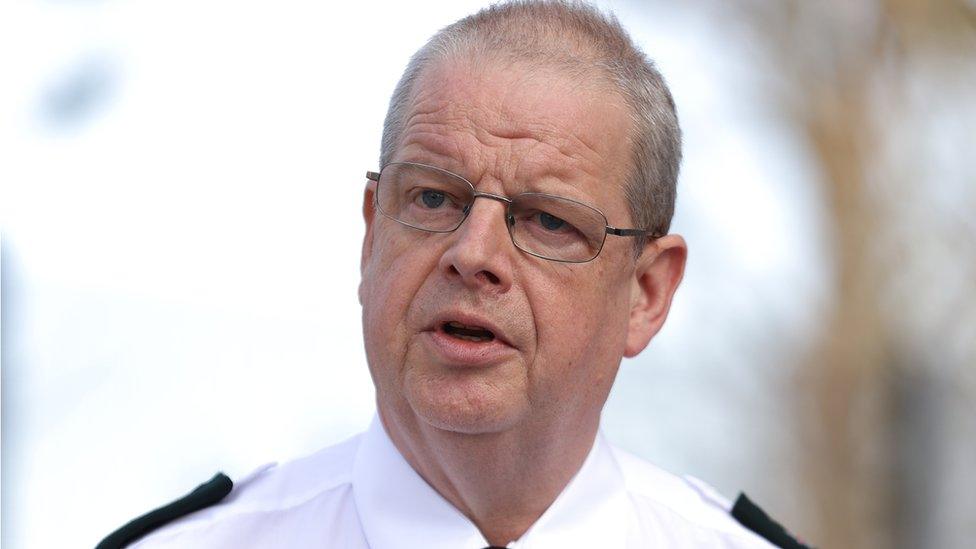
PSNI chief constable Simon Byrne says he will not resign
What did the regulations say?
Lockdown regulations stated a maximum of 30 people were allowed to gather together outdoors.
The regulations, as they were in place on the day of the funeral, also stated that people could leave their homes to attend the funeral of a friend, external if no close family member or member of their household was attending.
People were allowed to leave their home to "visit a burial ground to pay respects to a member of your household or your family member of a friend".
A number of Mr Storey's family attended his funeral.
The regulations said if anyone had to leave their home they should maintain a distance of at least 1m from anyone outside their household.
What were the other allegations surrounding the funeral?
An independent investigation was launched into Mr Storey's cremation at Roselawn Cemetery, which is run by Belfast City Council.
It had been claimed that some council staff were allowed to go home early, leaving republicans largely in control of what took place.
The report, published in February 2021, found Sinn Féin did not pressurise the council to give his family special treatment.
It also rejected suggestions there had been a "takeover" of Roselawn cemetery.
In addition, questions were also raised over why a large crowd gathered at Milltown Cemetery in west Belfast for speeches by Sinn Féin politicians when the cremation happened at Roselawn in east Belfast.
Milltown Cemetery is a significant location for republicans, and contains the graves of a number of high-profile republicans, including Bobby Sands.
What is the significance of republican funerals?
Large crowds are a common feature at funerals of high profile republicans.
During the Troubles, tens of thousands of people turned out for the funerals of IRA members who had been killed.
Funerals often feature common elements, such as a piper, while the coffin is draped in the Irish flag.
According to political commentator Chris Donnelly, these types of funerals "demonstrate a commitment to pursue the cause" of Irish unification, as well as allowing mourners to grieve and pay their respects.
"So a funeral almost is an occasion to express gratitude, renew commitment and the passing of the torch all rolled up into one," he said.
- Published3 July 2020
